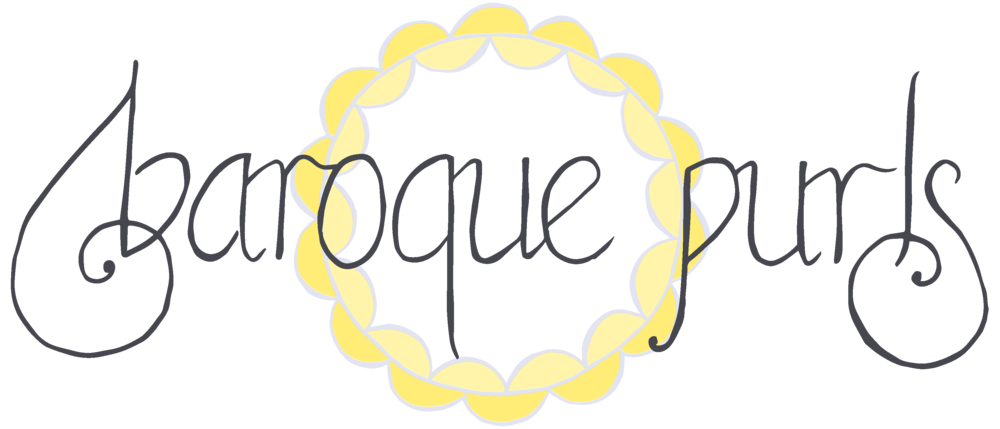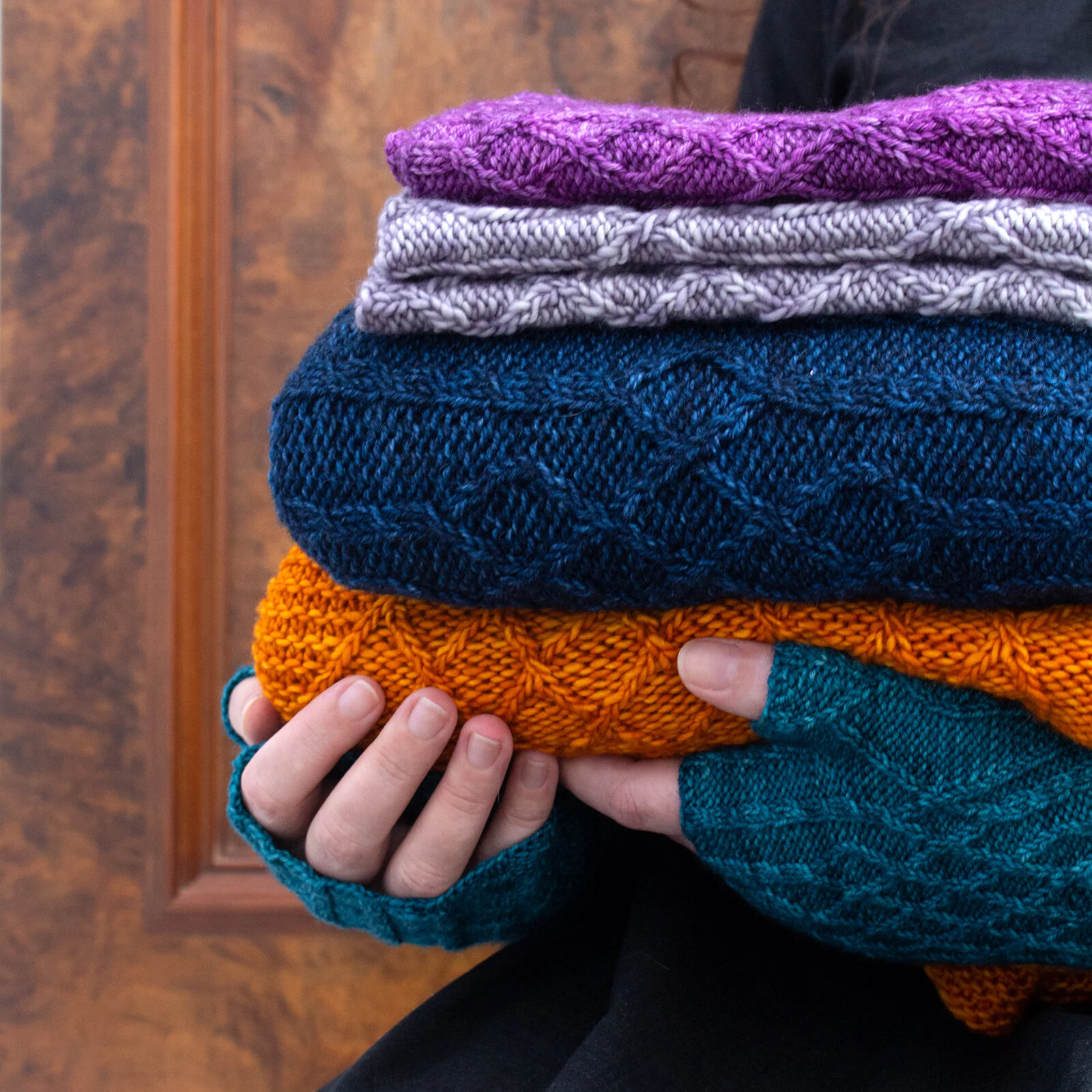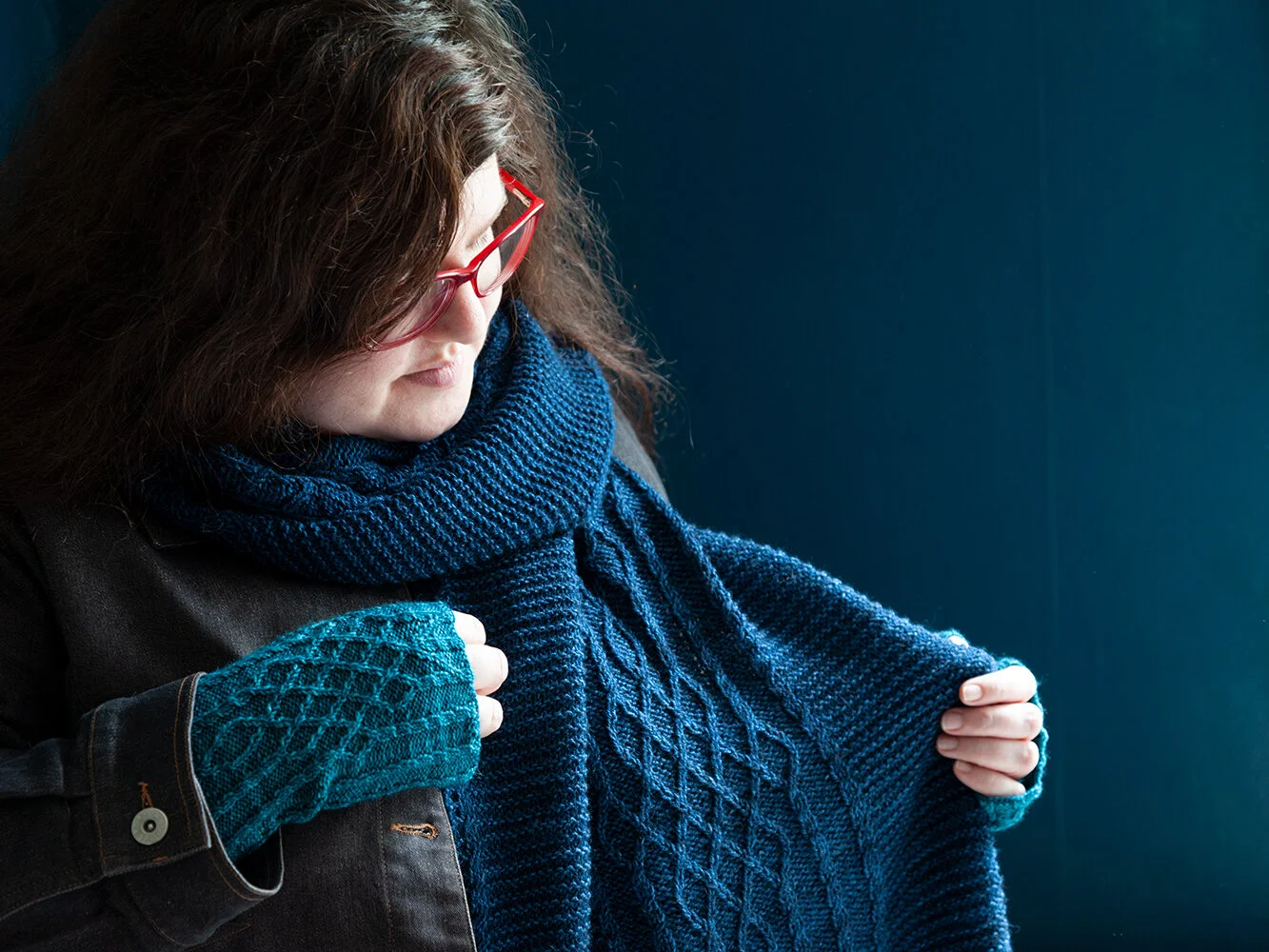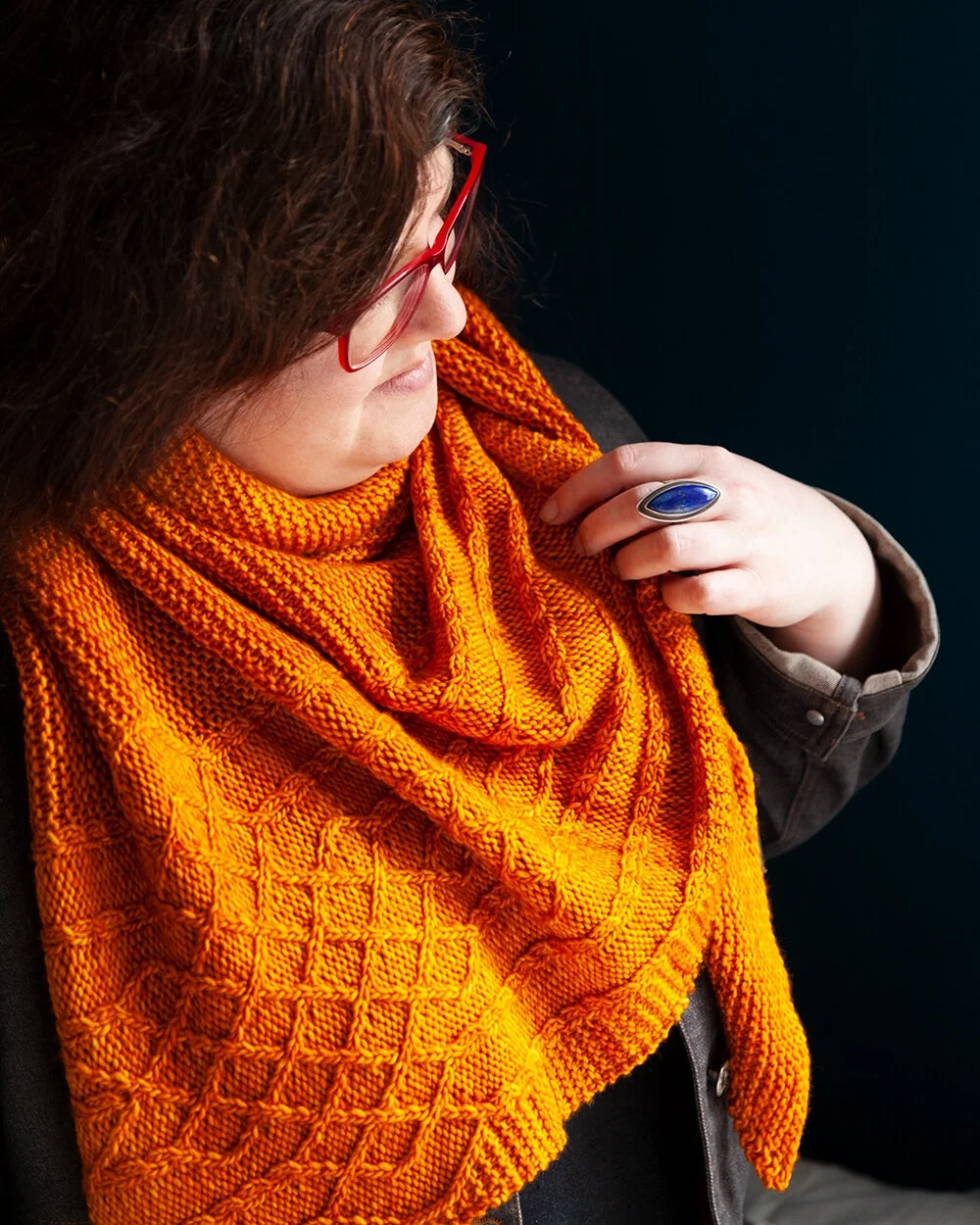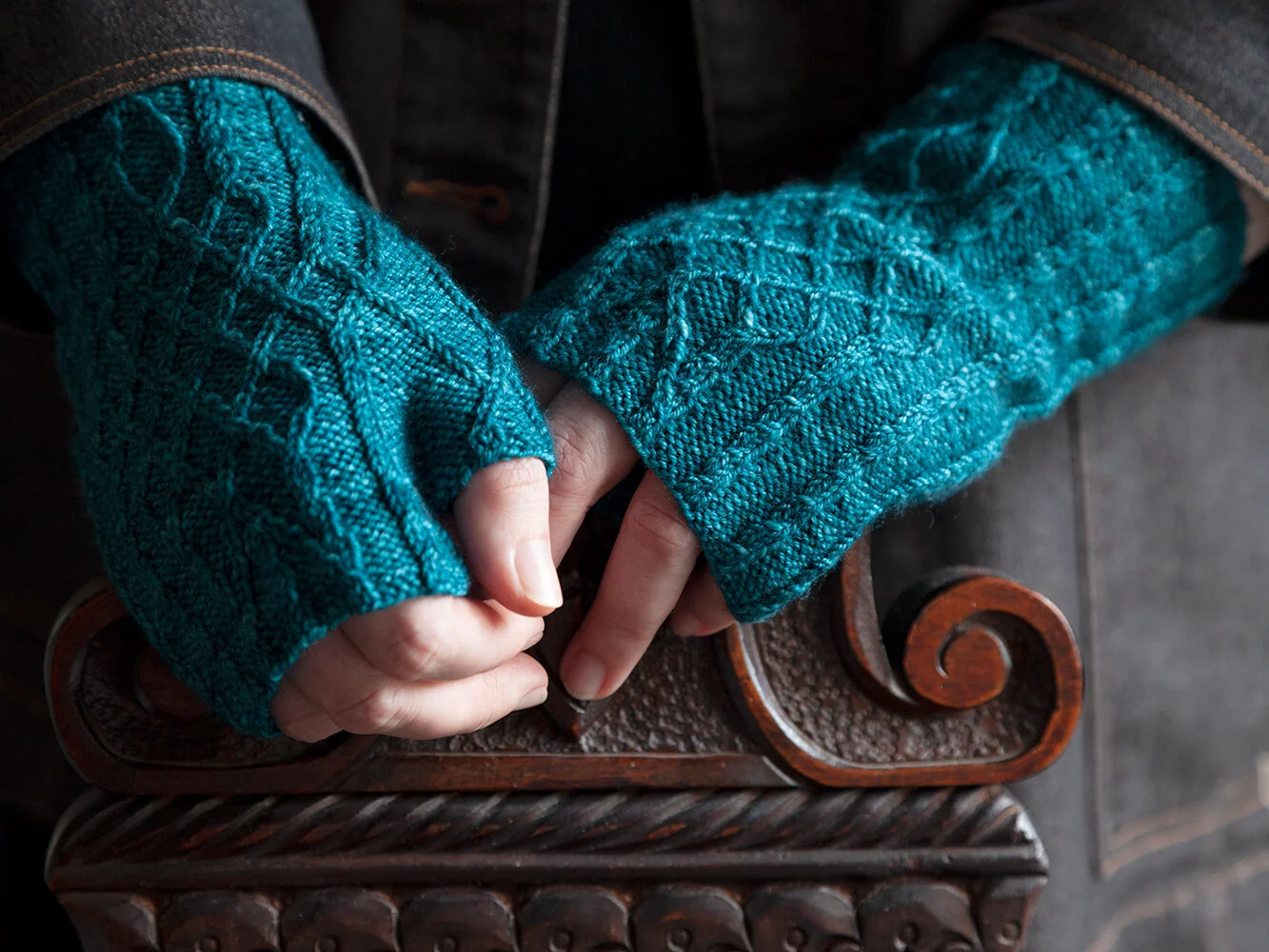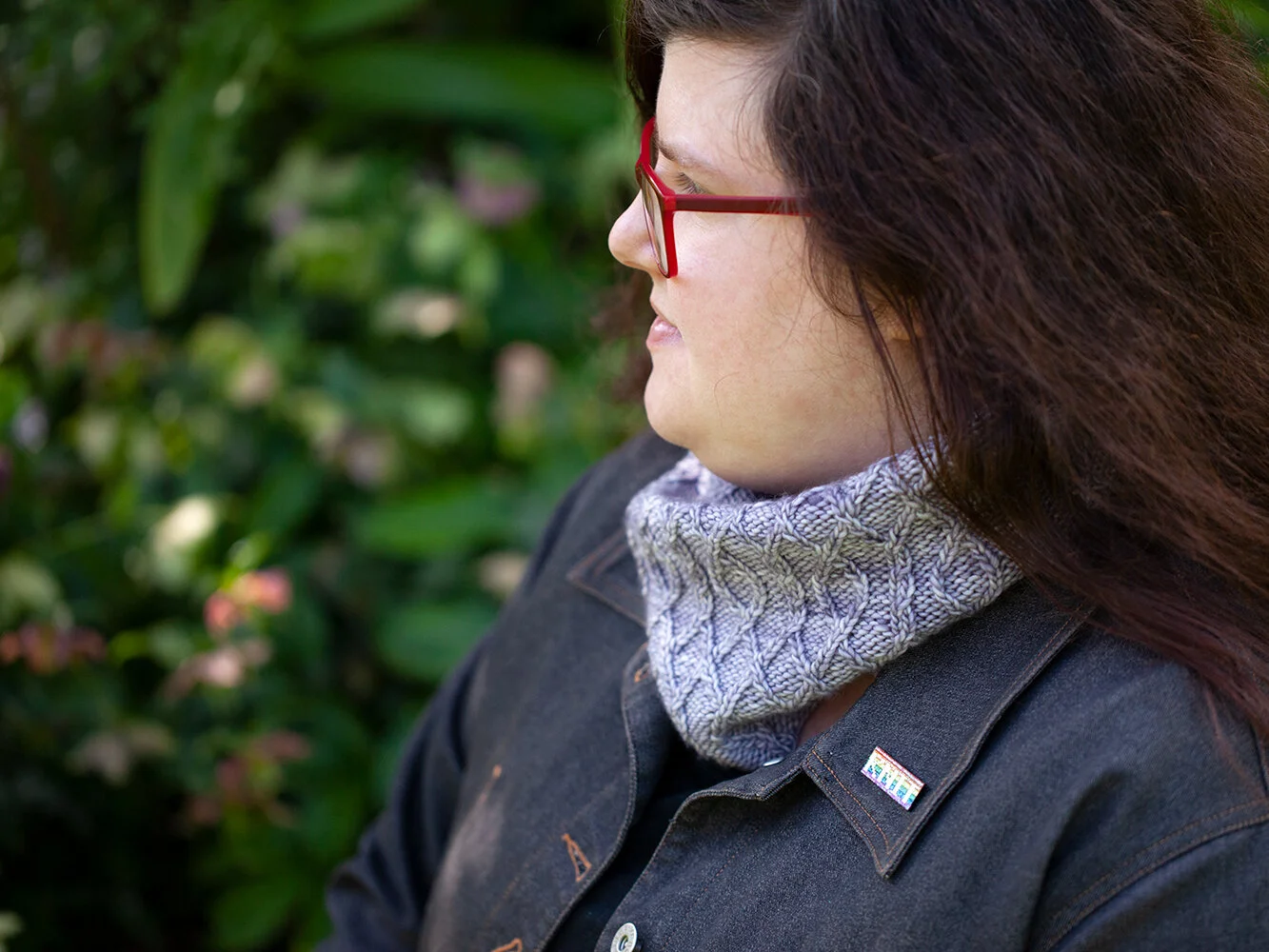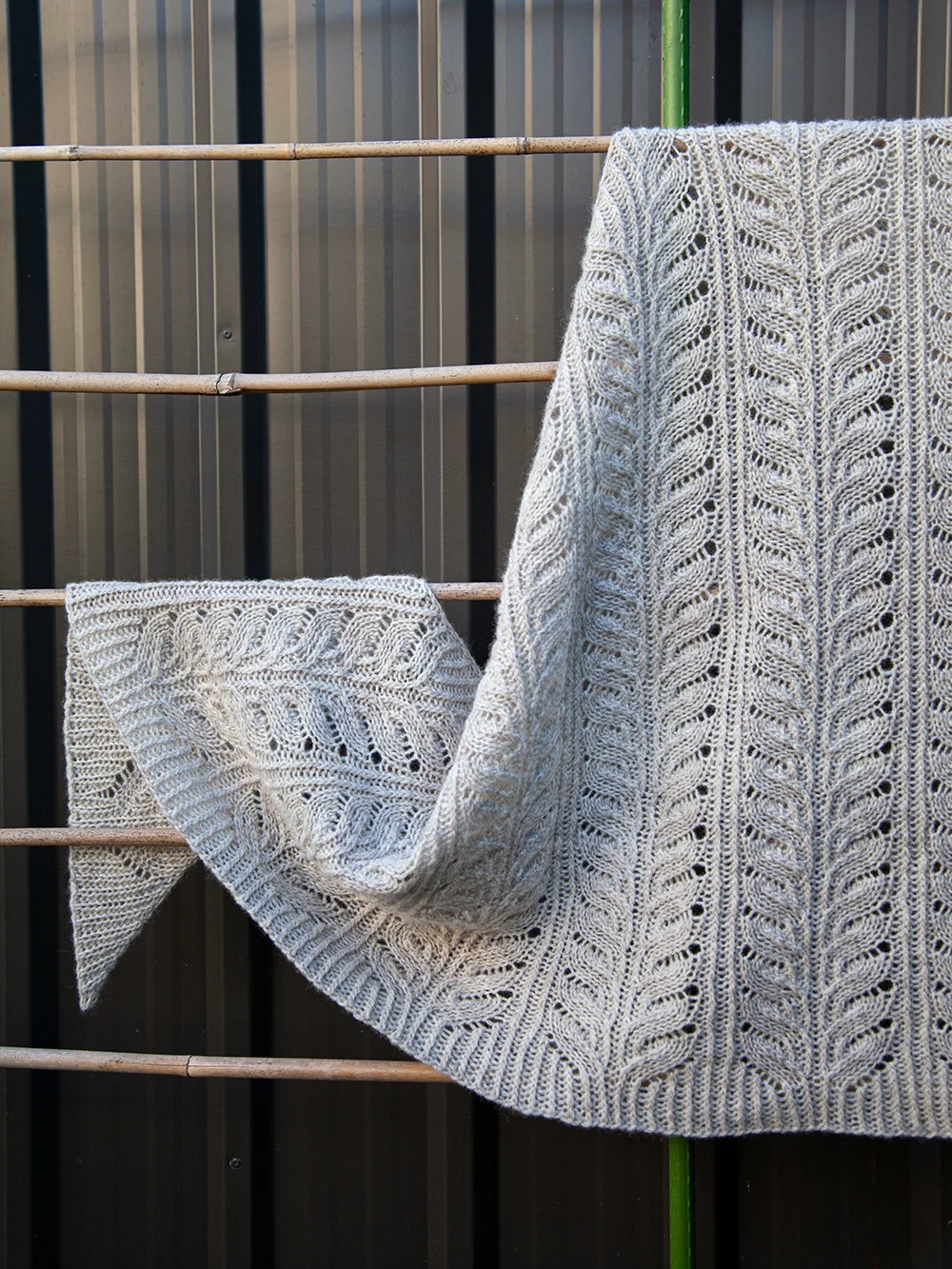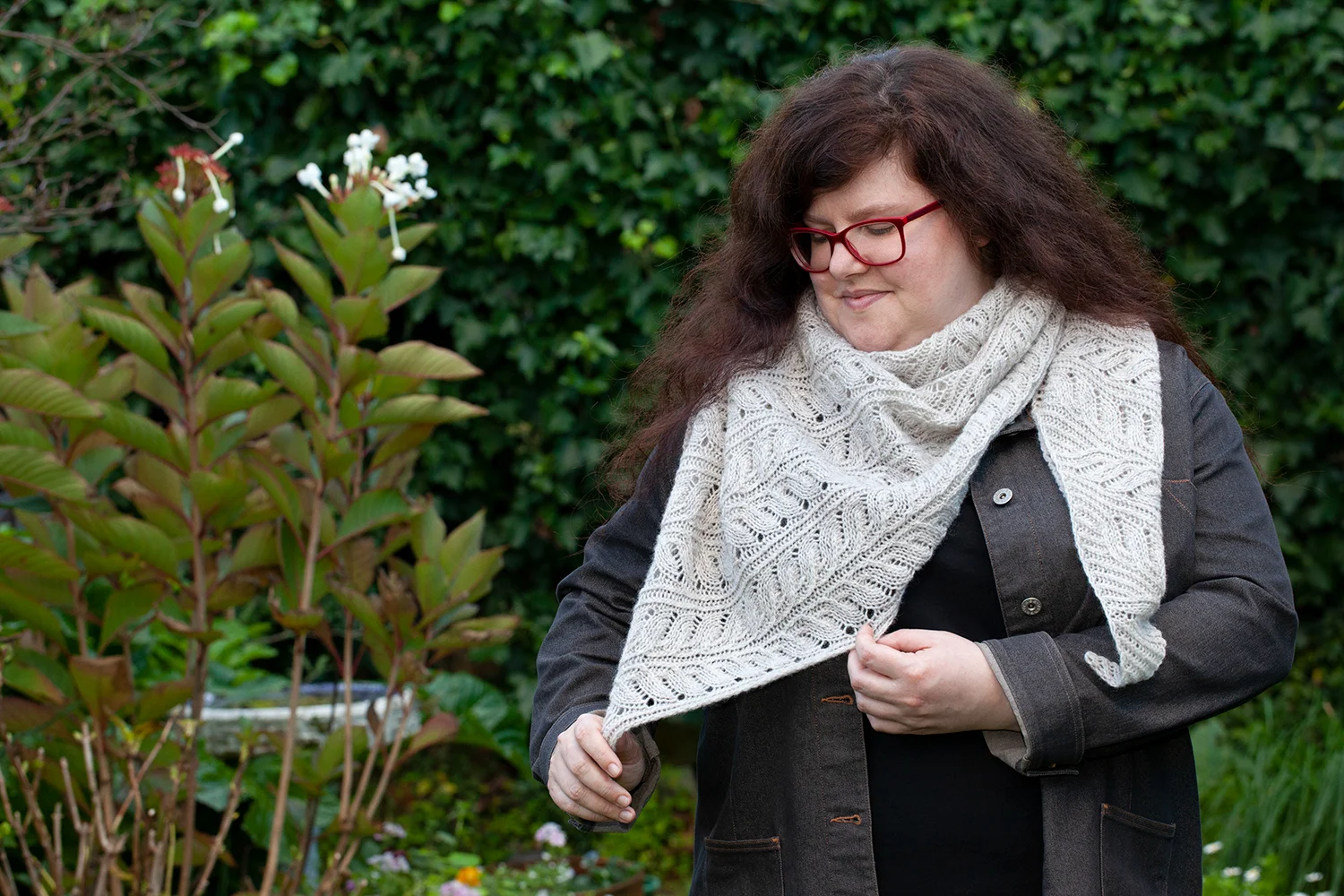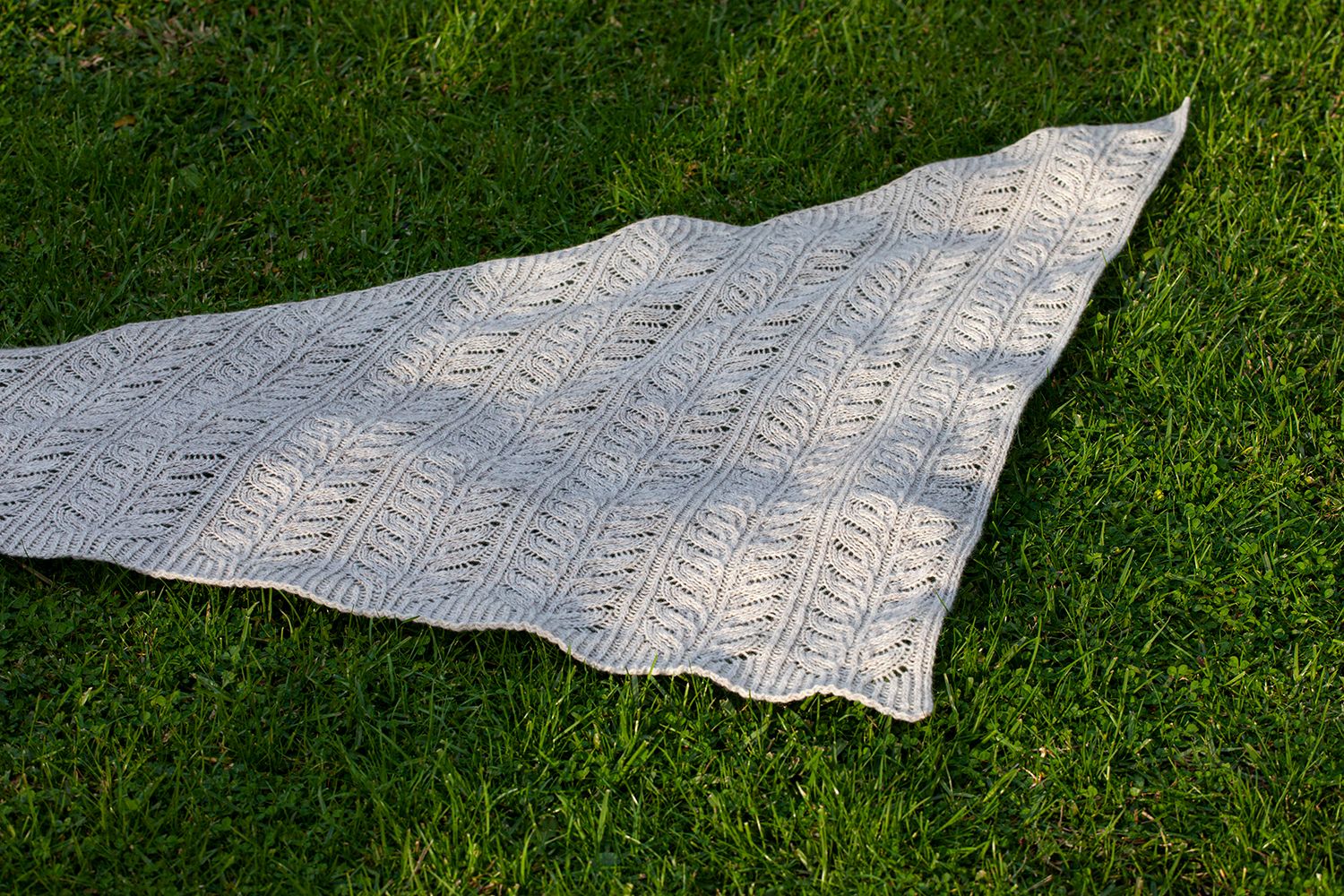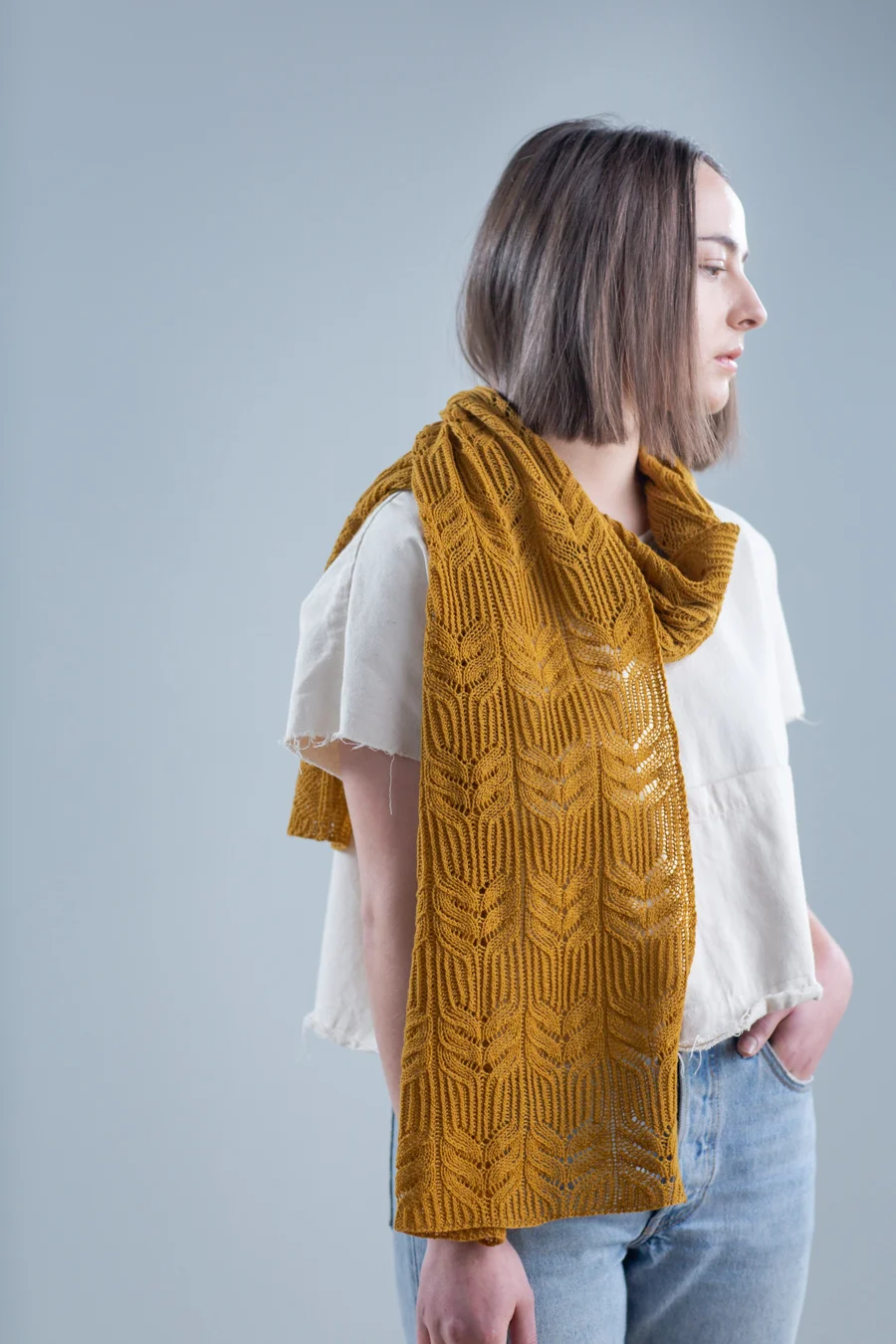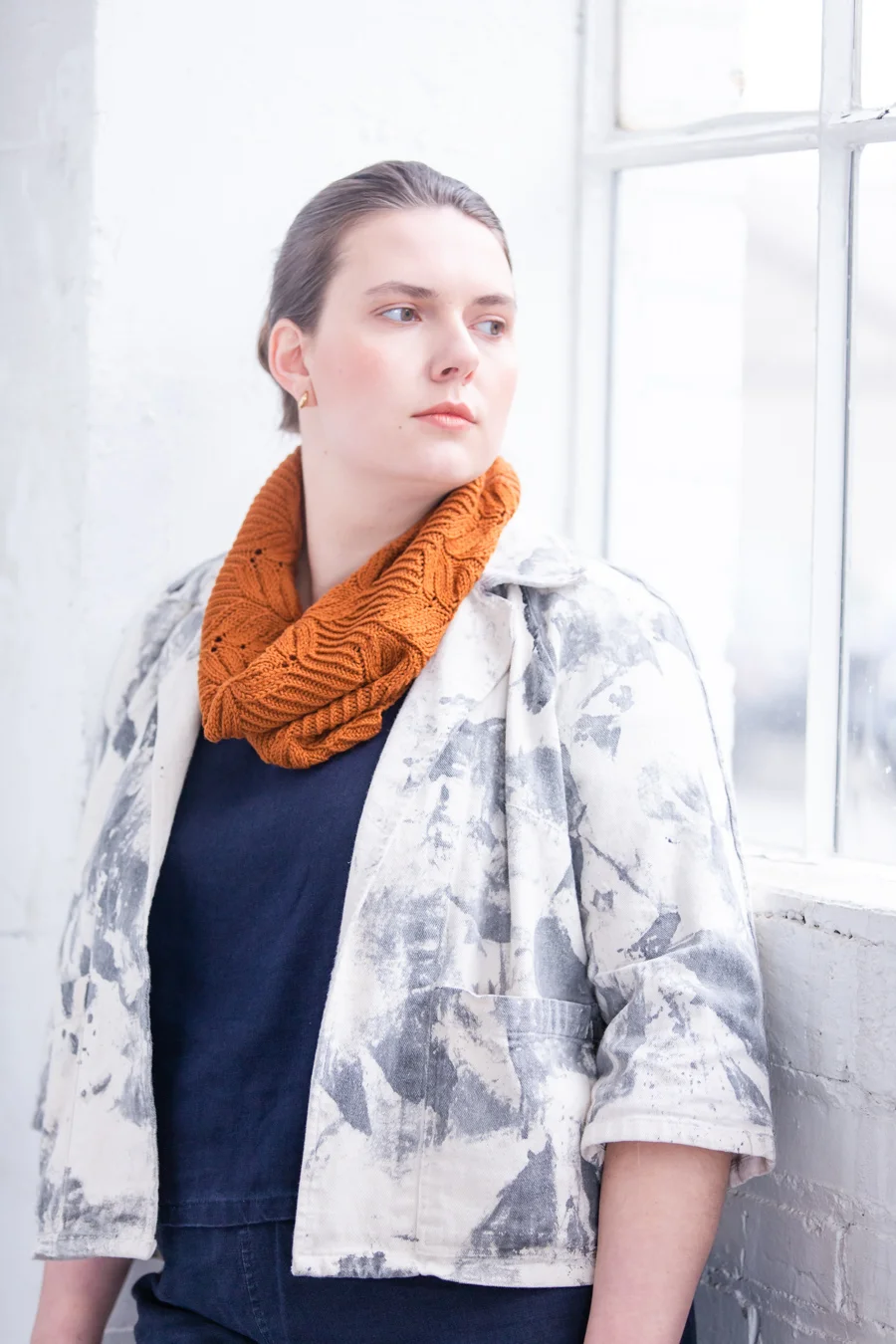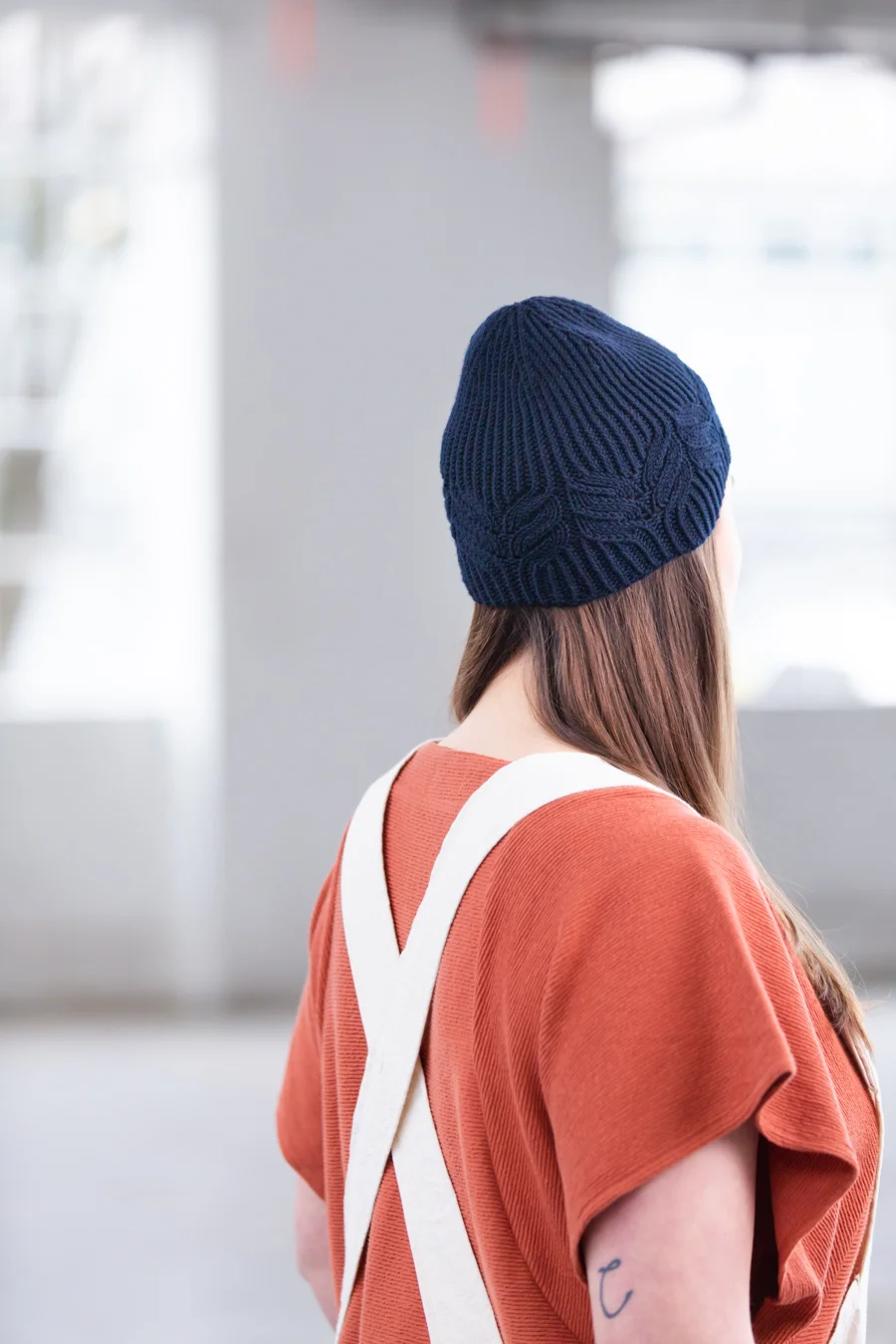I’ve been dreaming of making this collection a reality for literally years, and I’m so happy to be able to present it to the world! Twisted Strings is a collection of five accessories inspired by the decorative tracery found on Baroque string instruments, in unapologetic celebration of my particular brand of nerdery. The names of the individual designs - the Dowland Wrap, Tielke Shawl, Playford Hat, Jaye Mitts, and Simpson Cowl - are borrowed from seventeenth-century composers, instrument-makers, and music teachers and publishers.
My interest in the seventeenth-century musical world is a long-standing thing - I studied various aspects of it in my university days, which I touched on in my earlier post Why ‘Baroque Purls’? At around the same time I took up playing the viol - badly - before moving on to singing, which happily was a much better fit for me. I still enjoy messing around with songs from this period, but my cats do tend to object.
A couple of years ago I was fortunate enough to visit Europe for the first time, and one of the big highlights for me was visiting Leipzig and its Bach Museum, churches, and Museum of Musical Instruments. I took a ridiculous number of photos, some of which you can see below, and I took my inspiration for the cable patterns in this collection directly from a few of the decorative details I captured.
If you’re interested, you can find more examples of beautiful historical instruments in the Orpheon collection, and via the MIMO (Musical Instrument Museums Online) database, which I wish had existed when I was at uni!
A case full of viols, and an early edition of Playford’s Introduction to the Skill of Musicke (Musikinstrumentenmuseum der Universität Leipzig, 2016)
This clavichord was one of the few instruments we were allowed to touch (Musikinstrumentenmuseum der Universität Leipzig, 2016)
Dowland Wrap:
Named for the composer John Dowland, famous for his melancholy songs and instrumental works for viols, the Dowland Wrap is a dramatic rectangular wrap featuring a central cable panel flanked by contrasting garter stitch.
Contrabass, Italy, mid-17thC (Musikinstrumentenmuseum der Universität Leipzig)
From ‘Flow my teares’, a lute song from Dowland’s Second Booke of Songs or Ayres (1600)
Dowland Wrap features:
a rectangular wrap worked from end to end
a central cable panel inspired by the geometric tracery decorating 17thC string instruments, with wide garter stitch edges for textural contrast
simple 1-over-1 cables, which can be knit without a cable needle (instructions for my favourite twist method are included)
requires 5 skeins of Malabrigo Dos Tierras (50% baby alpaca, 50% merino wool; 210yds/192m per 100g skein), or 1050yds/960m of DK-weight yarn. Sample colourway: ‘Azul Profundo’
72.5”/184cm long and 17.5”/44.5cm wide, relaxed after blocking
charts and written instructions are both provided in full.
Tielke shawl:
The Tielke Shawl is an asymmetric triangular shawl featuring a garter stitch ground and a cable panel which grows in complexity as you knit: it flows from simple twisted cables, representing the strings of musical instruments, into a complex intertwining motif. The shawl is named for the Tielke family of musical instrument makers - Joachim, who created richly decorated instruments in his Hamburg workshop, and Gottfried, who made the five-stringed contrabass (now in Leipzig’s musical instrument museum), which inspired the shawl’s cable detail.
Contrabass by Gottfried Tielke, 1662 (Musikinstrumentenmuseum der Universität Leipzig)
Tielke Shawl features:
an asymmetric triangular shawl worked from one point to the opposite side
simple garter stitch with a cable panel running along one edge, inspired by the geometric motif decorating a 17thC contrabass
simple 1-over-1 cables, which can be knit without a cable needle (instructions for my favourite twist method are included)
requires 4 skeins of Malabrigo Washted (100% superwash merino wool; 210yds/192m per 100g skein), or 820yds/750m of worsted-weight yarn. Sample colourway: ‘Sunset’
74.5”/189cm wingspan and 31.5”/80cm depth, relaxed after blocking
charts and written instructions are both provided in full.
Playford hat:
The Playford Hat is named for the music publisher and bookseller John Playford, known for publishing music by various composers, the collection of dance melodies and steps The English Dancing Master, and instructional books for various instruments including the violin. The hat’s all-over cable pattern is inspired by the delicate latticework framed with hearts inscribed on a beautiful violin by Hans Krouchdaler (circa 1700).
Playford Hat features:
a cabled beanie worked in the round from the bottom up
an all-over cable pattern inspired by the geometric lattices framed with hearts on a highly-decorated Baroque violin
simple 1-over-1 cables, which can be knit without a cable needle (instructions for my favourite twist method are included)
requires 1 skein of Malabrigo Arroyo (100% superwash merino wool; 335yds/306m per 100g skein), or 205yds/187.5m of sport-weight yarn. Sample colourway: ‘Borraja’
18”/46cm circumference and 8.75”/22.5cm length, relaxed after blocking
to fit 19-23”/48-58.5cm head circumference
charts and written instructions are both provided in full.
From The English Dancing Master (1651)
Jaye mitts:
The Jaye Mitts, named for the viol-maker Henry Jaye, are a pair of fingerless mitts featuring a delicately intertwining cable motif, and simple twisted cables on the palms representing the strings of musical instruments. Many modern viols being played today are careful copies of Jaye’s original instruments.
Jaye Mitts features:
a cabled pair of mitts worked in the round from the bottom up
cable motifs inspired by the geometric decoration on a 17thC descant viol, and plain twisted cables on the palm side
simple 1-over-1 cables, which can be knit without a cable needle (instructions for my favourite twist method are included)
requires 1 skein of Malabrigo Sock (100% superwash merino; 440yds/402m per 100g skein), or 196.5yds/180m of light fingering weight yarn. Sample colourway: ‘Teal Feather’
7”/18cm circumference and 7.25”/18.5cm length, relaxed after blocking
to fit 7-8.5”/18-21.5cm palm circumference
charts and written instructions are both provided in full.
Descant viol by Henry Jaye, mid-17thC (Musikinstrumentenmuseum der Universität Leipzig)
Simpson cowl:
The Simpson Cowl is named for viol-player and composer Christopher Simpson, who wrote The Division Viol to teach players how to embellish and improvise on a melody or bass line. The short cowl is worked in the round, and features an all-over pattern of intertwining cable motifs which I extrapolated from the lattice motifs found on various seventeenth-century viols and other instruments.
Simpson Cowl features:
a cabled cowl knit in the round from the bottom up
an all-over cable pattern inspired by the decorative latticework on 17thC string instruments
simple 1-over-1 cables, which can be knit without a cable needle (instructions for my favourite twist method are included)
requires 1 skein of Malabrigo Washted (100% superwash merino wool; 210yds/192m per 100g skein), or 201yds/184m of worsted-weight yarn. Sample colourway: ‘Pearl’
22”/56cm circumference and 8.5”/21.5cm depth, relaxed after blocking
charts and written instructions are both provided in full.
From The Division-viol, or The Art of Playing ex tempore to a Ground (1665)
The cable patterns featured in these designs have some elements in common across the whole collection, most notably interwoven latticework motifs of varying complexity, combined with 2-stitch cable ribs which symbolise the twisted strings of musical instruments. The cable patterns are relatively fuss-free, and can be worked entirely without a cable needle - instructions for my favourite method are included in the patterns, and you can also find my tutorial here. You will come across a few stitches worked through the back loop (because they give a crisper look to the cable tracery), but I’ve kept these to a minimum for the sake of ease.
All five patterns are available for download on Ravelry and Payhip, where you can find additional photos and details, and purchase them individually or together in an ebook (with a reduced price per pattern).
